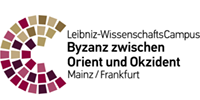Analyses of the animal bone material (Caričin Grad)
The archaeozoological part of the RGZM Caričin Grad project is carried out in close collaboration between the Serbian archaeozoologist Nemanja Marković and the RGZM team member Henriette Kroll. The bulk of the animal bone material consists of remains of economically exploited mammals, mainly the domestic species sheep, goat, cattle and pig, but also equids, camels, cats and dogs. Furthermore, a couple of game species were identified, among them roe deer, red deer, hare, and beaver (fig. 1). The small fauna comprises bird bones, primarily chicken remains, but also geese and a wide variety of wild species. Apart from that, fish bones, as well as a lot of rodent, amphibian and reptile bones were found.
The main objective of the archaeozoological investigation is to illuminate animal exploitation strategies in the city and its surroundings. The spatial distribution of the bone finds, which is supported by a GIS, is crucial for the reconstruction of activity zones. Mappings of animal bone assemblages that hint to butchery, to artisan waste, or to typical household waste can depict material cycles within the city. Furthermore, social diet differences between upscale city areas and the housing areas of the low class inhabitants can give evidence of the availability and affordability of animals or their meat respectively.
An important question will be the exploitation of animal labour in the city and its surroundings. A local agriculture is not thinkable without the labour of cattle and equids. The same applies for transportation: for the erection of the city, the aqueducts and roads huge amounts of building and fuel material, of tools, food and water had to be brought to Caričin Grad. At least some part of the way these materials had to be hauled by land – an expensive and slow way of transportation that required labour animals. Within these considerations the role of the comparably many camel bones found in Caričin Grad must be deliberated (fig. 2).
The analysis of wild species gives evidence of the relations between the city and its environs. Due to their specific demands concerning food, vegetation type, and shelter, wild species large and small point to certain landscape types and waterbodies in and around Caričin Grad (fig. 3). Preliminary results show hints of an import of Danube fish as well as of marine species traded far inland.
A special research question tackles a possible cause for the end of the city: It is assumed but not proven that the Justinian Plague spread to this part of the Balkans. As rodent populations form dangerous reservoirs for this disease teeth of Black Rats (Rattus rattus) were selected for DNA-analyses in order to find out whether these animals were infected.
Finally, it shall be tried to detect diachronic changes in the animal use to enlighten possible economical, social or ecological circumstances that shed some light on the rise and fall of the city during its short existence.
Publications
- H. Baron / A. E. Reuter / N. Marković, Rethinking Ruralization in Terms of Resilience: Subsistence Strategies in Sixth-Century Caričin Grad in the Light of Plant and Animal Bone Finds. Quaternary International 499A, 2.1.2019, Special Issue: Food Production and Land Use, ed. F. Pigière, Oe. Akeret, M. Kühn. 112-128.
- J. J. Birk / I. Bugarski / S. Fiedler / V. Ivanišević / H. Kroll / N. Marković / A. Reuter / C. Röhl / R. Schreg / A. Stamenković / S. Stamenković / M. Steinborn, An Imperial Town in a Time of Transition. Life, Environment, and Decline of Early Byzantine Caričin Grad. Proceedings of the 3rd International Landscape Archaeology Conference, 2014 (2016) lac2014proceedings.nl
- R. Schreg / J. J. Birk / S. Fiedler / H. Kroll / N. Marković / A. E. Reuter / C. Röhl / M. Steinborn, Wirtschaftliche Ressourcen und soziales Kapital. Gründung und Unterhalt der Kaiserstadt Iustiniana Prima. Mitt. DGAMN 29, 2016, 9-20.
- M. Steinborn / H. Baron / A. E. Reuter / J. Birk / K. Horn / S. Fiedler / C. Röhl / R. Schreg, Vom Glanz des Kaisers und dem Dreck der Straße – Interdisziplinäre Forschungen zum Alltag der Frühbyzantinischen Kaiserstadt Iustiniana Prima. Antike Welt 4, 2018, 8-13.
Team
- Dr. Henriette Baron
Partners
- Archäologisches Institut Belgrad/SRB: Nemanja Marković
- Zentrum für Baltische und Skandinavische Archäologie in der Stiftung Schleswig-Holsteinische Landesmuseen Schloss Gottorf, Archäologisch-Zoologische Arbeitsgruppe (AZA)
- University of Manchester/GB, Faculty of Life Science: Dr. Mike Buckley
- Institut für Klinische Molekularbiologie der Christian-Albrechts-Universität Kiel, Prof. Dr. Ben Krause-Kyora








![[Translate to Englisch:] [Translate to Englisch:]](/fileadmin/_processed_/7/9/csm_Tierknochenfunde_Baron__Abb.1_f15c1af2ef.jpg)
![[Translate to Englisch:] [Translate to Englisch:]](/fileadmin/_processed_/f/4/csm_Tierknochenfunde_Baron__Abb.2_d95e1c5b57.jpg)
![[Translate to Englisch:] [Translate to Englisch:]](/fileadmin/_processed_/0/9/csm_Tierknochenfunde_Baron__Abb.3_4970118eb9.jpg)




